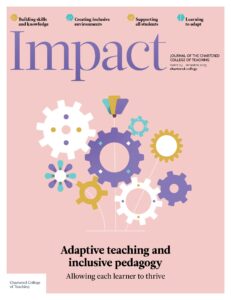Redesigning SEND provision: Lessons learned

6 min read
STEPHEN BAILEY, CAROLINE CURTIS AND PAUL DAVIES, QUEEN’S COLLEGE, LONDON, UK
Introduction
The rising need for supporting students with SEND is well documented (DfE, 2024), putting strain on school services and leaving some students without the necessary care (NICE, 2022). This case study examines how a London independent day school for girls redesigned its support for students with SEND and the lessons learned. The school, known for its caring environment and expertise in supporting all types of learners, often attracts parents for this reason, and our work with students with SEND aligns with this ethos. This case study details the development of our provision, including the redesign of our neurodiversity department (housed in our Thrive Centre) in 2024, staff roles, parental collaboration and student impact.
The first step in our design of SEND provision was to reframe ‘SEND’ into a neurodiversity framework. This approach made our provision accessible to a wider range
Join us or sign in now to view the rest of this page
You're viewing this site as a guest, which only allows you to view a limited amount of content.
To view this page and get access to all our resources, join the Chartered College of Teaching (it's free for trainee teachers and half price for ECTs) or log in if you're already a member.
- Costa LA, Pereira Sanches LM, Rocha Amorim RJ et al. (2020) Monitoring academic performance based on learning analytics and ontology: A systematic review. Informatics in Education 19(3): 361–397.
- Department for Education (DfE) (2024) Special educational needs in England: Academic year 2023/24. Available at: https://explore-education-statistics.service.gov.uk/find-statistics/special-educational-needs-in-england (accessed 18 March 2025).
- Matthews N (2020) Participatory design in education: Engaging teachers and students in the design of learning spaces. Educational Design Research 4: 45–60.
- National Institute for Health and Care Excellence (NICE) (2022) Social, emotional and mental wellbeing in primary and secondary education. Available at: www.nice.org.uk/guidance/ng223/resources/social-emotional-and-mental-wellbeing-in-primary-and-secondary-education-pdf-66143833987525 (accessed 18 March 2025).
- TES (2024) 11 reasons to use Provision Map. Available at: www.tes.com/en-gb/for-schools/blog/article/11-reasons-use-provision-map (accessed 19 March 2025).
- Van Themaat JVL (2019) Thinking together changes the educational experiences, provision and outcomes for SEND pupils – professional learning communities enhancing practice, pedagogy and innovation. Support for Learning 34(3): 290–311.
- Yang D, Chen P, Wang K et al. (2023) Parental involvement and student engagement: A review of the literature. Sustainability 15(7): 5859–5876.
0
0
votes
Please Rate this content
Please login to comment
0 Comments
Oldest
Newest
Most Voted
Inline Feedbacks
View all comments










